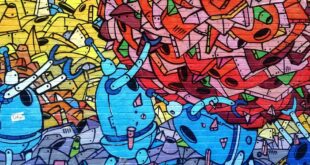The Rise of Digital Art
Digital art, as a form of creative expression, has been slowly making its way into the art world for the past few decades. However, with technological advancements and the increasing accessibility of tools that support digital creation, digital art has become an integral part of the contemporary art world. This has led to innovative and modernist revolutions, which is not only shaping the digital art platform but also impacting the traditional art world.
Challenges of Traditional Art
Traditional art forms tend to have higher costs, which can be prohibitive for most artists and art collectors. There is also the high time and effort investments to create most traditional art forms, as well as the long-term preservation, transportation, and storage of the works. Additionally, traditional art galleries and museums tend to prefer local and international artists whose artwork have already gained recognition. It becomes a great hazard for well-off new modern patrons or emerging artists to showcase their creativity via traditional artwork.
Advantages of Digital Art
As a proponent of digitization, artists can circumvent traditional laws. Digital art requires minimalistic resources that enable artists to focus on their content and create unique styles. Similarly, an artist can effortlessly store their digital creation online via their website, make available their artwork to people all over the world.
In like manner, the digital world removes peculiar boundaries. The internet can facilitate influence channels, meaning artists can natively retain intellectual control over their work, and undergo experimentation with little to no constraints at the option of the creators.
Multi-Dimensional Scope
Digital art transcends reaching admiration in default senses alone – and this differentiates itself from traditional styles. Digital art embrances animation, machine work that is precised and complex adaptable elements and attractive features to projects. Structures like projections could be vivified and make highlighted easier. Virtual reality is a new dimension introduced by digital art and lets outsiders possess access to it.
Conclusion
Digital Art is avant-garde, evolving to style which applies technology in its accepted form to tell enigmatic stories. Classification and blending of delineating edges present designers with attentive and dynamic equations. The future entails a fluctuating pile of nontraditional abstract trajectories where art, forms, animation, and technology blend forthwith unequivocally. Together, digital art will continuously remain a limitless spectrum, undoubtedly a compulsory component in the artistic arena now and for a long time.
 Mind Uncharted Explore. Discover. Learn.
Mind Uncharted Explore. Discover. Learn.




